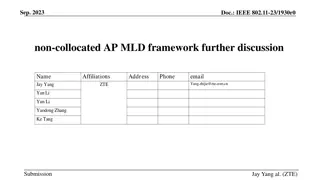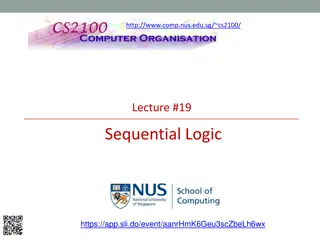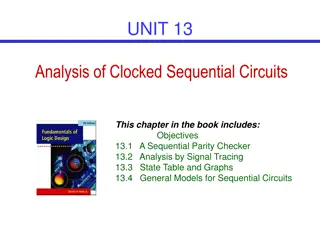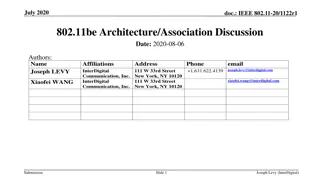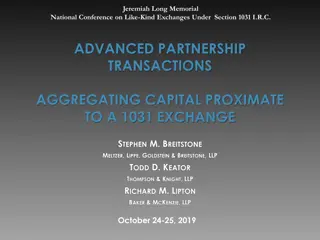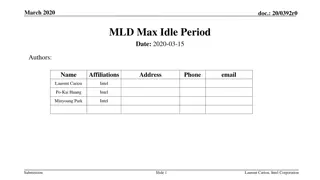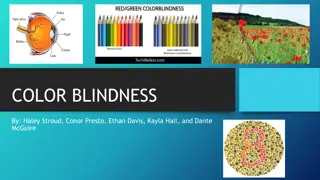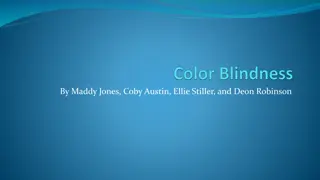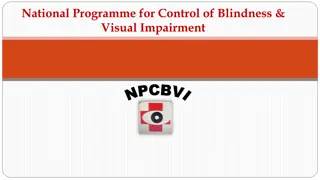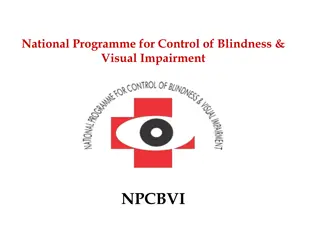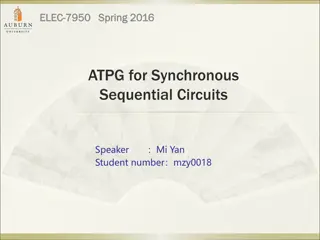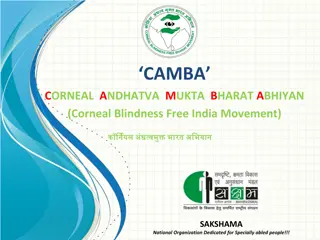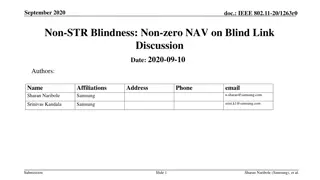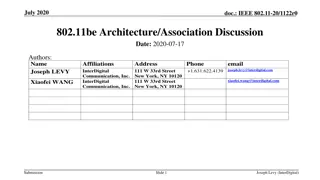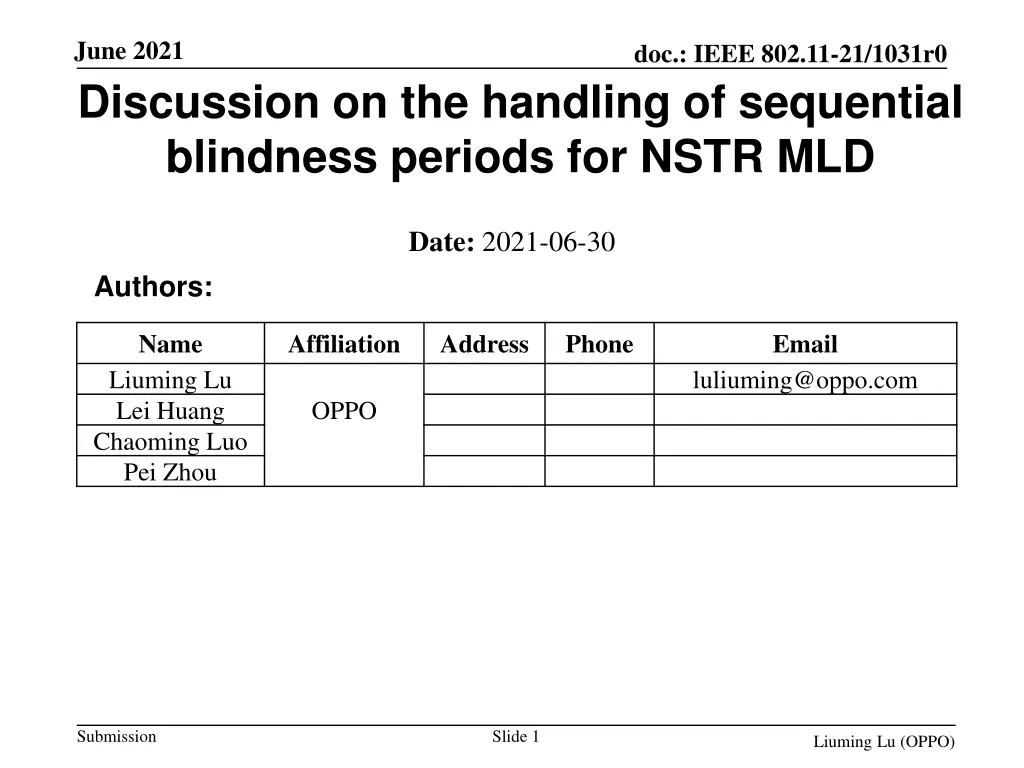
Handling Sequential Blindness Periods in IEEE 802.11be Draft 1.0
This discussion addresses the handling of sequential blindness periods in IEEE 802.11be Draft 1.0, focusing on issues arising from NSTR-based interference and proposing methods for effective management of medium access recovery during continuous transmissions.
Download Presentation

Please find below an Image/Link to download the presentation.
The content on the website is provided AS IS for your information and personal use only. It may not be sold, licensed, or shared on other websites without obtaining consent from the author. If you encounter any issues during the download, it is possible that the publisher has removed the file from their server.
You are allowed to download the files provided on this website for personal or commercial use, subject to the condition that they are used lawfully. All files are the property of their respective owners.
The content on the website is provided AS IS for your information and personal use only. It may not be sold, licensed, or shared on other websites without obtaining consent from the author.
E N D
Presentation Transcript
June 2021 Discussion on the handling of sequential blindness periods for NSTR MLD doc.: IEEE 802.11-21/1031r0 Date: 2021-06-30 Authors: Name Liuming Lu Lei Huang Chaoming Luo Pei Zhou Affiliation Address Phone Email luliuming@oppo.com OPPO Submission Slide 1 Liuming Lu (OPPO)
June 2021 doc.: IEEE 802.11-21/1031r0 Introduction 802.11be has specified 35.3.14.7 Medium access recovery procedure to handle blindness issues due to the NSTR-based interference for NSTR MLD, but the handling of sequential blindness periods has not been considered in 11be Draft 1.0. This contribution provides the potential issues lying in the sequential blindness periods caused by the NSTR-based interference from the continuous transmissions, and proposes the method to handle the sequential blindness periods. Submission Slide 2 Liuming Lu (OPPO)
June 2021 doc.: IEEE 802.11-21/1031r0 Issues 11be Draft 1.0 specifies the mechanism of medium access recovery upon the lost medium synchronization due to the transmission of one PPDU, shown in the following, but doesn t mention the handling of sequential blindness periods caused by the transmission of multiple PPDUs. STA affiliated with a non-AP MLD that belongs to a NSTR link pair is considered to have lost medium synchronization (due to UL interference) when the other STA, which is affiliated with the same MLD and belongs to that link pair, transmits a PPDU, except under the following condition: Both STAs ended a transmission at the same time. A STA that has lost medium synchronization due to transmission by another STA affiliated with the same MLD shall start a MediumSyncDelay timer at the end of that transmission event if that transmission event is longer than aMediumSyncThreshold. The STA may not start the MediumSyncDelay timer if the transmission event is shorter than or equal to aMediumSyncThreshold. Submission Slide 3 Liuming Lu (OPPO)
June 2021 doc.: IEEE 802.11-21/1031r0 Issues When the sequential blindness periods caused by the transmission of multiple PPDUs happen, some issues need to be considered to be handled in order to implement medium access recovery. Whether the MediumSyncDelay timer expire or reset to zero when the MediumSyncDelay timer has started due to the transmission of PPDU1 and the transmission of PPDU2 begins? Whether the MediumSyncDelay timer is restarted when the transmission of PPDU2 ends? BA from AP1 to STA2 BA from AP1 to STA1 PPDU2 from STA1 to AP1 PPDU1 from STA1 to AP1 AP1 link 1 STA1 AP MLD Blindness period Blindness period Non- AP MLD MediumSyncDelay initiated by the transmission of PPDU1 AP2 STA2 link 2 Restart the MediumSyncDelay timer? the MediumSyncDelay timer expires? Start the MediumSyncDelay timer Submission Slide 4 Liuming Lu (OPPO)
June 2021 doc.: IEEE 802.11-21/1031r0 Issues When the sequential blindness periods caused by the transmission of multiple PPDUs happen, some issues need to be considered to be handled in order to implement medium access recovery. when the MediumSyncDelay timer has started due to the transmission of PPDU1 and the transmission of PPDU2 begins, the MediumSyncDelay timer doesn t expire When the transmission of PPDU2 ends the MediumSyncDelay timer is NOT restarted even if the transmission event of PPDU2 is longer than aMediumSyncThreshold. This would lead to the inadequate protection provided for the channel in Link2 The transmission event is longer than aMediumSyncThreshold BA from AP1 to STA2 BA from AP1 to STA1 PPDU2 from STA1 to AP1 PPDU1 from STA1 to AP1 AP1 link 1 STA1 AP MLD Blindness period MediumSyncDelay initiated by the transmission of PPDU2 Blindness period Non- AP MLD MediumSyncDelay initiated by the transmission of PPDU1 AP2 STA2 link 2 Don t restart the MediumSyncDelay timer Start the MediumSyncDelay timer the MediumSyncDelay timer doesn't expire Submission Slide 5 Liuming Lu (OPPO)
June 2021 doc.: IEEE 802.11-21/1031r0 Proposals When the MediumSyncDelay timer has started due to the transmission of PPDU1 and the transmission of PPDU2 begins, the MediumSyncDelay timer expires or resets to zero if the transmission event of PPDU2 is longer than aMediumSyncThreshold. When the transmission of PPDU2 ends the MediumSyncDelay timer is restarted The transmission event is longer than aMediumSyncThreshold BA from AP1 to STA2 BA from AP1 to STA1 PPDU2 from STA1 to AP1 PPDU1 from STA1 to AP1 AP1 link 1 STA1 AP MLD MediumSyncDelay actually caused by the transmission of PPDU1 Blindness period MediumSyncDelay initiated by the transmission of PPDU2 Blindness period Non- AP MLD MediumSyncDelay initiated by the transmission of PPDU1 AP2 STA2 link 2 Start the MediumSyncDelay timer Restart the MediumSyncDelay timer the MediumSyncDelay timer reset to 0 Submission Slide 6 Liuming Lu (OPPO)
June 2021 doc.: IEEE 802.11-21/1031r0 Proposals If the MediumSyncDelay timer has started due to the transmission of PPDU1, the MediumSyncDelay timer doesn t expire when the transmission of PPDU2 begins or ends if the transmission event of PPDU2 is not longer than aMediumSyncThreshold. When the transmission of PPDU2 ends the MediumSyncDelay timer is NOT restarted. The transmission event is not longer than aMediumSyncThreshold BA from AP1 to STA1 PPDU2 from STA1 to AP1 BA from AP1 to STA2 PPDU1 from STA1 to AP1 AP1 link 1 STA1 Blindness period Blindness period AP MLD Non- AP MLD MediumSyncDelay initiated by the transmission of PPDU1 AP2 STA2 link 2 the MediumSyncDelay timer doesn't expire Start the MediumSyncDelay timer Submission Slide 7 Liuming Lu (OPPO)
June 2021 doc.: IEEE 802.11-21/1031r0 Summary This contribution provides the potential issues lying in the sequential blindness periods caused by the NSTR-based interference from the continuous transmissions, and proposes the method to handle the sequential blindness periods, which can be considered to improve the specification of 35.3.14.7 Medium access recovery procedure . Submission Slide 8 Liuming Lu (OPPO)
June 2021 doc.: IEEE 802.11-21/1031r0 Reference [1] IEEE 802.11be Draft 1.0 Submission Slide 9 Liuming Lu (OPPO)

